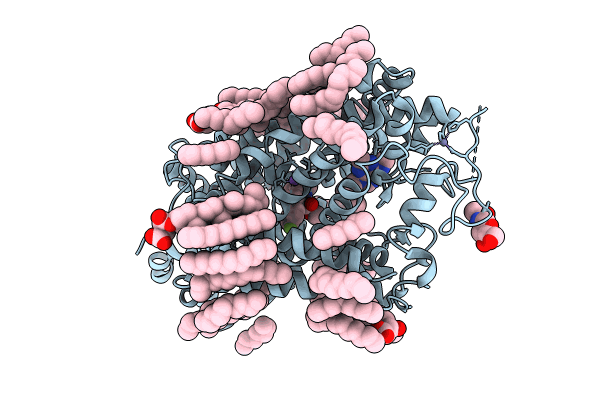
Deposition Date
2023-12-12
Release Date
2024-08-07
Last Version Date
2024-10-23
Entry Detail
PDB ID:
8VBY
Keywords:
Title:
Structure of the human dopamine transporter in complex with beta-CFT, MRS7292 and divalent zinc
Biological Source:
Source Organism:
Homo sapiens (Taxon ID: 9606)
Host Organism:
Method Details:
Experimental Method:
Resolution:
3.19 Å
Aggregation State:
PARTICLE
Reconstruction Method:
SINGLE PARTICLE


